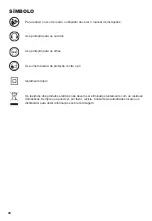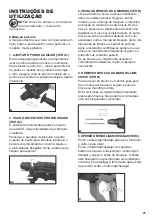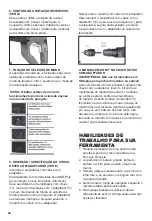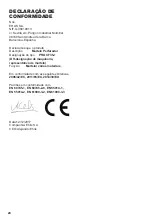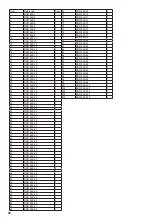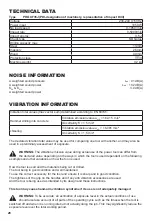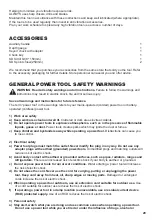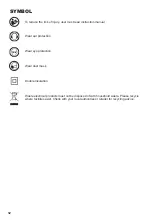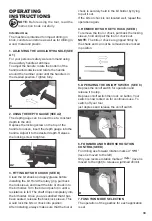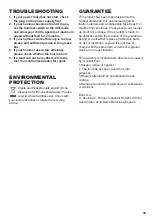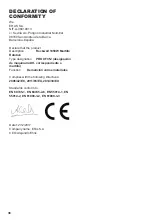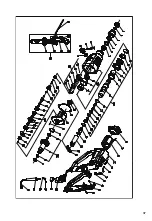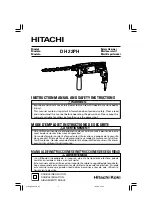
34
with the function mode selection switch . and
rotate the
selector to the desired operating mode.
WARNING: The operating mode selector
switch may be actuated only at a standstill.
8. INSERTING/REPLACING THE KEYED
CHUCK WITH ADAPTOR (SEE E)
Inserting the keyed chuck with adaptor
To work with tools without SDS-Plus (e.g., drills
with cylindrical shafts), a keyed chuck with
adaptor(11) must be used. Insert the keyed
chuck with adaptor (11) with a twisting motion
into the tool holder until it can be heard to lock.
The adaptor locks itself. Check the locking by
pulling on the keyed chuck with adaptor
Removing the keyed chuck with adaptor
To remove the keyed chuck with adaptor (10),
pull the Locking Sleeve (1) to the rear, hold in
this position and remove the keyed chuck with
adaptor from the tool holder.
9. MOUNTING OF BIT IN THE KEYED CHUCK
WITH ADAPTOR
WARNING: Do not use tools without SDS-plus
for hammer drilling or chiseling!
Before mounting the drill bit, attaching the keyed
chuck with adaptor, insert bit between the chuck
jaws as far as it will go. Ensure drill bit is in the
center of the chuck jaws. Using the chuck key
(10) provided, there are three holes in which
the chuck key should be inserted. Tighten them
equally in turn at each of the three holes, not
just at one hole. Your drill bit is now locked in the
chuck. The bit can be removed by reversing the
above procedures.
WORKING HINTS FOR
YOUR TOOL
1. Reduce the pressure on the drill bit when
it is about to break through. This will
prevent the drill from jamming.
2. When drilling a large hole, first drill a pilot
hole using a smaller drill bit.
3. Always apply pressure to your drill bit in a
straight line, and if possible at right angles
to the workpiece.
4. Never change the operating mode whilst
the rotary hammer is running.
5. Do not apply excessive pressure to the
tool when chiseling. Expressive force
does not speed up the work.
MAINTENANCE
Remove the plug from the socket before
carrying out any adjustment, servicing or
maintenance.
There are no user serviceable parts in your
power tool.
Never use water or chemical cleaners to clean
your power tool. Wipe clean with a dry cloth.
Always store your power tool in a dry place.
Keep the motor ventilation slots clean.
Keep all working controls free of dust.
Occasionally you may see sparks through the
ventilation slots. This is normal and will not
damage your power tool.
If the supply cord is damaged, it must be
replaced by the manufacturer, its service agent
or similarly qualified persons in order to avoid a
hazard.
E

